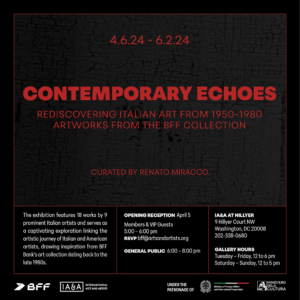
Environments and Dreamscapes: Q & A with Jessica Burnam
Jessica Burnam received her BA with highest honors in sculpture from the University of Virginia in 2015 and was a recipient of the Aunspaugh Post-Baccalaureate Fellowship at the University of Virginia from 2015 to 2016. Jessica has had residencies at Anderson Ranch (2016), Red Dirt Studio (2017-18), and Second St. Gallery. (2019). She has had solo exhibitions at Hillyer Art Space, Washington, D.C. (2017), at Red Dirt Studio, Mt. Rainier, MD. (2018) and at Second Street Gallery, Dove Gallery. (2019) Currently, she is pursuing a MFA in Scenic Design as a teaching fellow at the University of Virginia.
Your bio reads that you create environments for your pieces. Do the pieces inspire the environment or the environment the pieces?
“Vessel” is a sculpture in a current series where I build environments and dreamscapes that act as a terrane and home for a myriad of sculptural bodies to dwell. I enjoy pairing the very large with the very small; the set like-construction with the little inhabitants. It is this pairing that constitutes the artwork as a whole. There can be a great number of small physical elements in these works, but they, in my mind, are puzzle pieces, components coming together to realize the larger vision.
It depends. Sometimes I see the shape of the structure first and sometimes I am making a smaller sculpture and think, this needs to live somewhere. Most often the design process and the making process of all the elements (big and small) happen simultaneously, side by side. All of the elements feed off of one another, adapting and changing.
What brought you to the relationship of boat construction and the human form?
In my mind, they naturally go together. Both are vessels, thus the title of this exhibition.
A vessel can be a type of craft – a boat, a vehicle, a spaceship –that serves to transport bodies from a starting point to a destination.
A vessel can also be a container – a space that has an exterior and interior, a hollow which can be filled and inhabited. And aren’t our bodies containers for organs that pump and thrive, running our systems so we can move? And in our motion through life, don’t we ourselves become vessels of sorts?
These are ideas that my work stems from. Ultimately, the forms and the bodies I create are heavily abstracted so that my sculptures become hybrids and cross-mutations of these references, not appearing fully boat-like nor at all human.
In your piece “A Relic of the Future” you describe the vessel as transportive to the afterlife; What type of afterlife are you trying to express through this piece?
“A Relic of the Future” is a sculpture that precedes “Vessel.” In it, I juxtapose body-like elements with a sarcophagal, boat-like form—the sculpture becoming much like a living spaceship journeying to the afterlife. For the Ancient Egyptians, the vehicle of the sarcophagus was absolutely necessary to complete the transformative journey between life and death. I found this intriguing since metamorphosis of the body is a theme I explore in my work.
I would say the type of afterlife is open to the viewer for interpretation. I took inspiration from the sarcophagus, in both form and in function, and now, it is left to the viewer to imagine where it might travel. Questions and beliefs about the afterlife are a mysterious affair, so I wanted to create a likewise mysterious object.
You have a background in set design; how does that influence your creative process?
I worked as a set painter and fabricator throughout college. Upon graduating, I spent a summer working as a mold maker for an entertainment design and build studio in the L.A. area. Both of these experiences have heavily shaped my creative process in many ways – from the materials I use to the scale of my work, from how I approach my time management to how I problem solve.
Many of the materials and making techniques I use (foam, joint compound, and other industrial materials) are things I gained a familiarity with from working in these industries. I am also accustomed to working large. And when I work large and when there are many elements to keep tabs on, I create production timelines for myself to keep myself on track. These are just guidelines; however, since I also need flexibility when inspiration hits and plans get altered! Paying attention to the happy mistakes and adapting when the sculpture unexpectedly evolves is important to me. So altogether it is a balance and an intuitive process.
What is the relationship between your drawings and prints and your sculpture?
I draw constantly. I make drawings about thematic elements I present in my sculptures and, visa-versa, I make sculptures that further explore ideas contained in my drawings. The two mediums constantly build off of each other, back and forth, to generate new ideas and works.
I am not interested in making representational pictures of a sculpture that I’ve already created; instead, I want my drawings to have their own identity and voice that contributes to the dialogue I am creating throughout my body of work.
For me, my current printmaking practice is an extension of my drawing practice. My ink drawings include detailed cross hatching and a starkly contrasting color scheme of black and white – two qualities that translate well into etching. There are many things I love about the medium of printmaking and of the etching process especially. Overall, I find that it is another tool and technique for me to communicate my ideas through.

